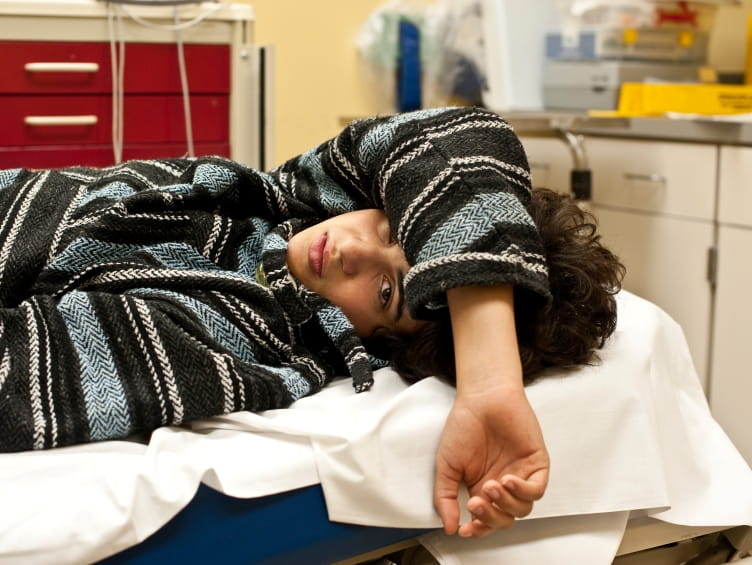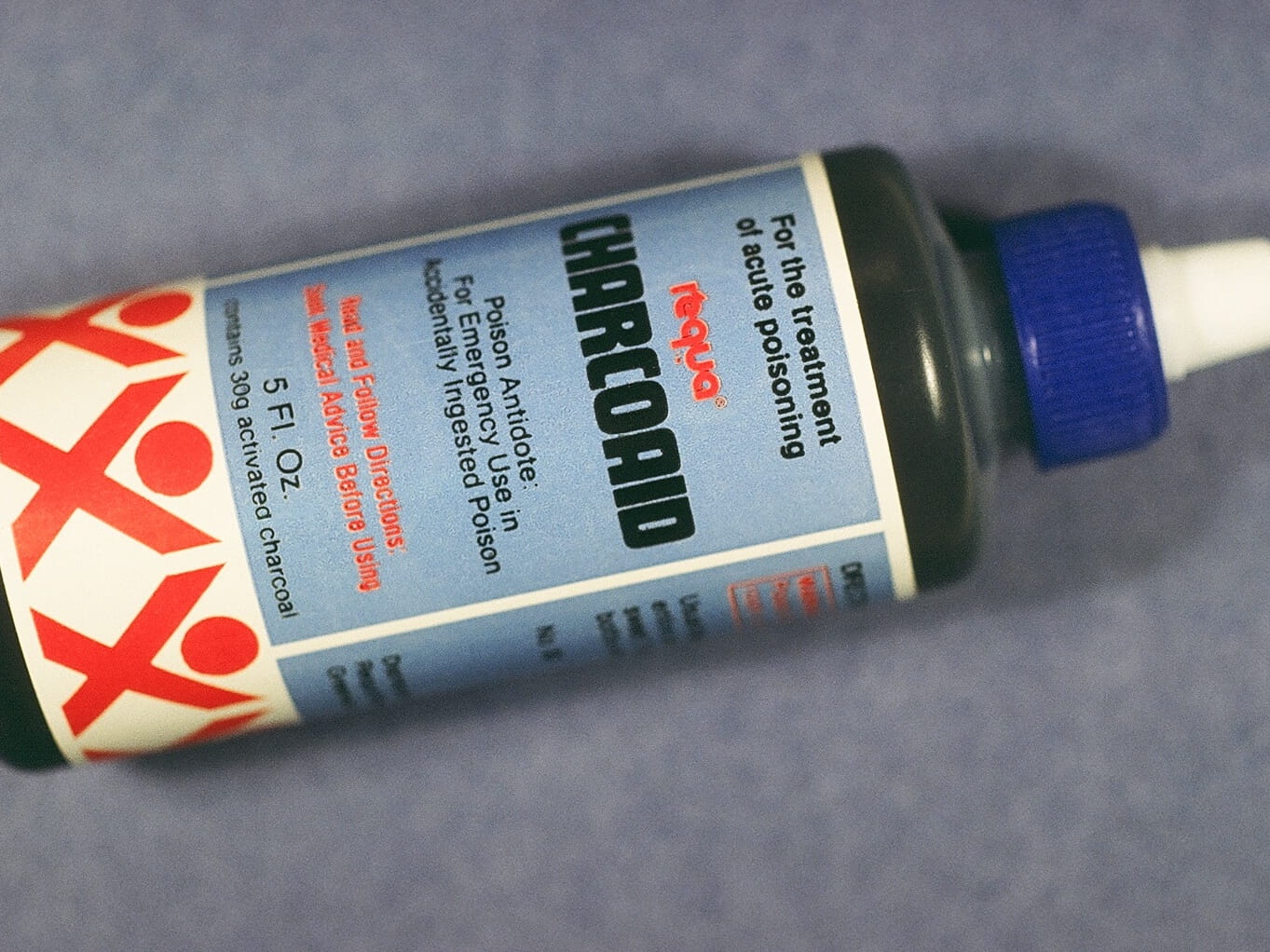Activated Charcoal: An Effective Treatment for Poisonings

The Bottom Line
Activated charcoal is a special form of carbon that can bind other substances on its surface in a process known as adsorption. It is also effective in adsorbing drugs in the gut so the drugs don't enter the body.

When people have to go to an emergency room because of an overdose, they are often worried about getting their stomachs "pumped." In reality, gastric lavage (stomach pumping) does not happen very often. Most overdoses are treated with supportive care. For example, if the person's blood pressure is low, IV fluids and medications might be given to raise blood pressure. There are also a few specific antidotes that can be of great benefit. However, when gastrointestinal decontamination is performed, it is typically accomplished with a product known as "activated charcoal," mixed and taken by mouth or feeding tube in the emergency room.
Activated charcoal is a special form of carbon that can bind other substances on its surface (adsorption). That is why it is used for water filtration. It is also used to adsorb drugs in the gut so the drugs don't enter the body. Activated charcoal is made by burning carbon-rich materials, such as wood, at very high temperatures to create charcoal. The resulting product is a black, odorless powder. The charcoal is then "activated" through a special process that makes lots of holes and crevices on the charcoal particles to increase surface area and available binding sites. One teaspoonful of activated charcoal has about the same total surface area as a football field! In the emergency room, the black powder is mixed with a liquid and given to a poisoned patient to drink. It is typically mixed with water but it can be mixed with a sweet beverage for children. Some activated charcoal products contain a sweetener called sorbitol that adds sweetness and is also a laxative. Some studies show that pushing the poison or drug through the gut faster might also decrease the amount that is absorbed into the body.
Activated charcoal has historically been used to clean water and as a treatment for many ailments. An early demonstration of the adsorptive properties of activated charcoal occurred in 1813 when the French chemist Bertrand drank 5 grams of arsenic trioxide (a very poisonous substance) mixed with activated charcoal and survived.
The efficacy of activated charcoal depends on how quickly it is given and the poisonous substance swallowed. The sooner activated charcoal is given after a drug or chemical is swallowed, the better it works.
Some activated charcoal products sold over-the-counter make claims of adsorbing toxins and decreasing bad breath. It is not recommended to use activated charcoal at home to treat an overdose. If a poisoning is serious enough to warrant the use of activated charcoal, the person should be monitored in an emergency room. Over-the-counter products might not be as "activated" as the activated charcoal used in the emergency room so they might not be as effective. Over-the-counter activated charcoal typically comes in 250 mg tablets. To provide the same dose given in the emergency room could require hundreds of tablets.
There are some internet sites that encourage making activated charcoal at home or using other carbon sources such as burned toast or charcoal briquettes. These products are not effective and should never be used.
The few adverse effects of activated charcoal are:
- nausea and vomiting after drinking it, often in response to the gritty feeling of the mixture, and
- vomiting and inhaling (aspirating) the activated charcoal. This could happen if the patient is very drowsy.
Overall, activated charcoal is well tolerated. There are studies that show that it works well for some ingestions and not so well for others. It is the most widely used method of gastrointestinal decontamination in emergency rooms today.
Pela Soto, PharmD, BSHS, BS
Certified Specialist in Poison Information
Poisoned?
Call 1-800-222-1222 or
Prevention Tips
- Do not try to treat an overdose with activated charcoal at home.
- Do not confuse burned toast or barbecue briquettes with activated charcoal; they don’t work.
This Really Happened
A physician called Poison Control from the ER to discuss a patient who had intentionally taken aspirin tablets in an effort to harm herself. The ingestion was approximately 45 minutes earlier. The patient was awake and alert, but tearful. She claimed to have taken "several handfuls" of aspirin.
Poison Control recommended that the patient receive activated charcoal as soon as possible. It was also recommended that the emergency physician measure the aspirin concentration in her blood every 2 hours until the aspirin concentration dropped. Poison Control also recommended other laboratory tests appropriate for an aspirin overdose.
During a follow-up call from Poison Control, the nurse caring for the patient reported that the patient drank the activated charcoal without issue. Her blood aspirin concentration initially rose but then declined steadily. Once the blood aspirin concentration was down to a safe range, the patient was medically cleared and transferred to a psychiatric facility. No permanent damage was anticipated.
For More Information
Mayo Clinic. Activated Charcoal [Internet]. Rochester (MN). 2014 December [cited 2015 Feb 27].References
University of Kentucky. Historical production and use of carbon materials. [Internet]. 2015 January [cited 2015 Feb 27].
Poisoned?
Call 1-800-222-1222 or
Prevention Tips
- Do not try to treat an overdose with activated charcoal at home.
- Do not confuse burned toast or barbecue briquettes with activated charcoal; they don’t work.
This Really Happened
A physician called Poison Control from the ER to discuss a patient who had intentionally taken aspirin tablets in an effort to harm herself. The ingestion was approximately 45 minutes earlier. The patient was awake and alert, but tearful. She claimed to have taken "several handfuls" of aspirin.
Poison Control recommended that the patient receive activated charcoal as soon as possible. It was also recommended that the emergency physician measure the aspirin concentration in her blood every 2 hours until the aspirin concentration dropped. Poison Control also recommended other laboratory tests appropriate for an aspirin overdose.
During a follow-up call from Poison Control, the nurse caring for the patient reported that the patient drank the activated charcoal without issue. Her blood aspirin concentration initially rose but then declined steadily. Once the blood aspirin concentration was down to a safe range, the patient was medically cleared and transferred to a psychiatric facility. No permanent damage was anticipated.
